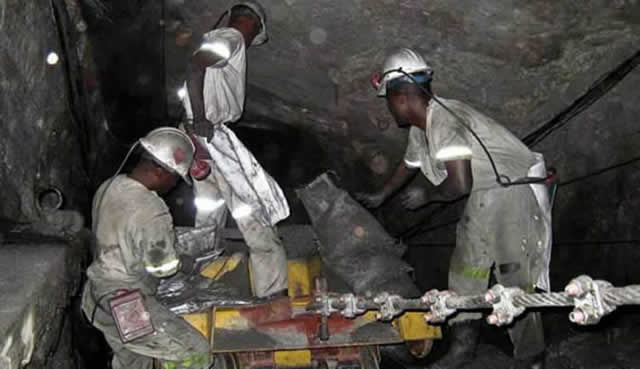‘Govt must publish mining revenue payments’

Conrad Mwanawashe : Business Reporter
GOVERNMENT should publish revenue payments made by mining companies on an annual basis and separate specific revenue sources as part of improved governance in the mining sector, a research on mining revenues has said. The research is titled: “Government Revenues from Mining; A Case Study of Caledonia’s Blanket Mine” conducted by the Resources for Development Consulting. Currently, Government does not publish project-by-project revenue collection data.
“The Government should also publish the project-specific fiscal terms that apply to all mining projects. This information is not commercially sensitive and contract disclosure in other jurisdictions has demonstrated that it increases trust between citizens, Government and companies.
Surely the citizens of Zimbabwe have as much of a right as Caledonia’s investors to know the terms under which their natural resources are being exploited,” the research said.
The study is an economic analysis of Caledonia’s Blanket Mine and clarifies why revenue payments have been made between 2010 and 2016. It then looks at the revenues that may be generated going forward eight years of the mine life and the process of indigenisation and how indigenous partners are benefiting including the timelines.
“As Zimbabwe has not kept pace with other African governments in disclosing mining contracts, the only public source of information on the tax terms that apply to the project come from Caledonia’s filings to their investors. There are three main sources of Government revenue from the Blanket mine; five percent royalty on the value of gold sales; 25 percent corporate income tax and withholding taxes on payments to non-resident companies (5 percent on dividends and 15 percent on management fees),” the research said.
The research focuses on Blanket Gold mine operated by Caledonia near Gwanda which accounts for about 15 percent of Zimbabwe’s industrial gold production. The research said Blanket Mine was selected for the project because of the volume of public domain economic data available. As a listed counter on the Toronto Stock Exchange, Caledonia is required to disclose annual financial data and also detailed forecasts on future production.
The Blanket Mine has generated more than $50 million in Government revenue since it reopened in 2009. Corporate income tax accounts for about half of that total. The mine has been in operation for more 100 years and is one of the few mines in the country to have produced more than one million ounces and was the first in the country to complete the indigenisation process.
Caledonia owns 49 percent with the remaining 51 percent divided among Gwanda Community Trust — 10 percent; Blanket Employee Trust — 10 percent; the National Economic Empowerment Fund-16 percent and Fremiro — 15 percent. The research said Government revenues should increase in the coming years due to mine expansion though they will be heavily dependent on the price of gold.
Annual revenue can be expected to peak in the early 2020s at just under $20 million at $1 200/oz and more than $30 million at $1 600/oz.
It said the study highlights the continued revenue transparency shortcomings in Zimbabwe’s mineral sector.
Resources for Development Consulting, the company which conducted the research, is a policy research firm that’s seeks to assist citizens in resource-rich developing countries to secure a fair share of extractive sector wealth by analysing contracts and broader fiscal regimes and conducting integrated economic analyses to assess plausible Government revenues.











Comments